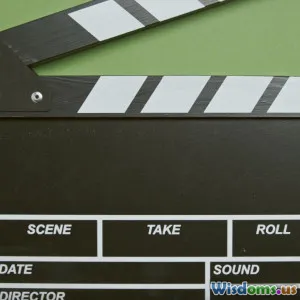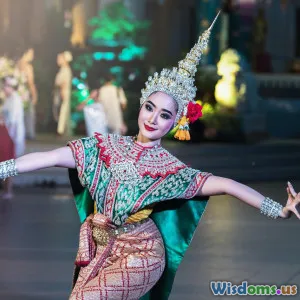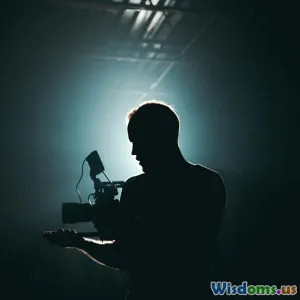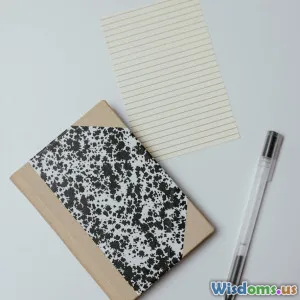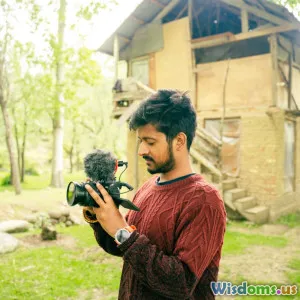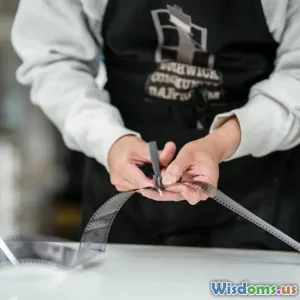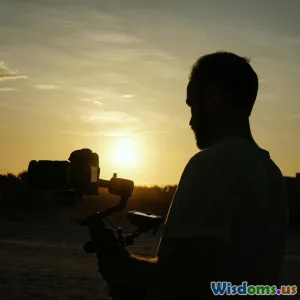
Behind the Scenes Documenting a 48 Hour Film Challenge
9 min read Explore the thrilling process of documenting a 48 Hour Film Challenge, revealing insights, challenges, and creative triumphs behind the scenes. (0 Reviews)
Behind the Scenes Documenting a 48 Hour Film Challenge
Imagine condensing the creative heart and frantic energy of filmmaking into just two days — that’s the thrilling premise behind a 48 Hour Film Challenge. For filmmakers and documentarians alike, capturing this whirlwind process is both a test of skill and a source of profound storytelling. This article peels back the curtain to explore the intricate craft of documenting a 48 Hour Film Challenge, blending technical insights, narrative strategies, and practical experiences.
Introduction: The Allure of the 48 Hour Film Challenge
The 48 Hour Film Challenge is more than a race to craft a short film; it’s a high-stakes arena of creativity, pressure, and collaboration. Teams must conceptualize, shoot, edit, and deliver a finished film within 48 hours, often working overnight to meet deadlines. Documenting this energetic sprint reveals layers of filmmaking rarely seen in traditional productions.
Why is documenting this challenge important? It preserves the pulse of creativity, showcases problem-solving under pressure, and highlights teamwork in its rawest form. It’s an unmatched narrative of endurance and artistic dedication.
Setting the Stage: Preparation Before the Challenge
Understanding the Rules and Framework
Every 48 Hour Film Challenge has a unique set of rules — usually including assigned genres, specific props, character names, or lines of dialogue that must appear in the film. Documentarians need to grasp these details early, as they shape the participants’ journey and narrative arc.
For example, participants in the 48HFP (48 Hour Film Project) receive their assigned elements right at kickoff, which instantly sparks brainstorming sessions. Capturing that initial burst of creativity sets the emotional tone for the documentary.
Crafting Your Documentation Plan
Documentary filmmakers must vote against spreading their resources thin. Decide what to highlight — is it the writing phase, technical problem-solving, or team interactions? Allocating time for interviews during breaks and positioning cameras in strategic locations (editing bays, sets, green rooms) ensures wide coverage.
A common strategy is to assign a dedicated crew member for filming behind-the-scenes footage continuously while another focuses on candid interviews. Consider lightweight equipment such as DSLRs with prime lenses and portable lighting to navigate tight spaces.
Gaining Trust and Building Rapport
Teams engaged in the challenge are often stressed and hyper-focused. The documentarian’s ability to blend into the background, earning participants’ trust quickly, dramatically improves the authenticity of footage. Quick pre-challenge introductions and explaining the documentary’s purpose can increase cooperation and allow access to intimate moments.
The Main Event: Documenting the Chaos and Creativity
Capturing the Creative Process
The essence of the documentary comes alive in observing the creative brainstorming sessions. These meetings brim with ideas, disagreements, and breakthroughs. Documentarians should aim to catch these raw exchanges, as they reveal the human side of filmmaking.
For instance, watching a team debate genres or rewrite blocking scenes under time pressure adds emotional stakes to the story. Candid shots of scribbled storyboards or whiteboard notes serve as visual storytelling elements.
Technical Hurdles and Solutions
No film production runs smoothly — and even less so under such tight constraints. Documenting moments of technical challenge, like lighting disputes or equipment malfunctions, not only adds tension but celebrates problem-solving prowess.
One remarkable example comes from a 2019 team that solved unexpected audio issues by creating a makeshift sound booth using pillows and blankets. Capturing these quick thinking solutions enriches the narrative and inspires viewers.
Documenting the Human Element
Filmmaking is ultimately about people. Highlight interpersonal dynamics such as stress-handling, moments of encouragement, and exhaustion. Well-timed interviews — both candid and reflective — help contextualize the emotional toll and triumph.
A memorable quote from Thomas, a cinematographer in a 48-hour challenge, was, "The adrenaline is our fuel, but friendship is what gets us across the finish line."
Time-Lapse and Visual Techniques
Visual storytelling benefits greatly from time-lapse footage showing set builds or editing sessions. It condenses hours of labor into visually compelling sequences that keep the documentary engaging.
Employing varied shooting angles — close-ups on actor expressions, wide shots of busy workstations — paints a dynamic picture of the filmmaking environment.
Post-Production: Editing the Documentary
Selecting the Narrative Arc
In post, it's critical to craft a compelling storyline that balances technical aspects with human moments. A traditional structure might follow the cycle of anticipation at kickoff, tension during the day, and exhilaration or fatigue at the finale.
Interweaving testimonials from participants with b-roll footage enriches the story. Highlighting key milestones such as first reads, rehearsals, and final renderings creates pacing.
Challenges in Editing Real-Time Content
The 48 Hour format generates massive amounts of footage. Efficient pre-logging during shoots and using software that supports robust metadata management reduces time spent in post. Equally important is creating a soundtrack that complements the high-energy mood without overwhelming dialogue or ambience.
Sharing Insights and Lessons Learned
The documentary is also an educational tool. Include reflections from teams about what worked and what didn’t. Such insights turn the film into inspiration and guidance for future participants.
For example, a director might say, "Next time, we’ll prep more shot lists before the timer starts."
Real-World Impact and Inspiration
48 Hour Film Challenges have become a vital incubator for filmmakers worldwide. Many alumni of these events have launched successful film careers, crediting the challenge’s intense learning curve as foundational.
Documentaries that reveal what happens behind-the-scenes offer an inspiration boost, demystifying the filmmaking process. They encourage aspiring filmmakers to dive no matter their experience, reinforcing that creativity thrives under constraints.
One standout example is the short documentary Race Against Time, which follows a winning team and was praised for its authentic portrayal of the filmmaking frenzy.
Conclusion: More Than Just 48 Hours
Documenting a 48 Hour Film Challenge is a unique storytelling adventure that captures passion, problem-solving, and collaboration compressed into a fleeting moment of creative frenzy. Through meticulous planning, empathetic filming, and thoughtful editing, a documentary unveils the rich tapestry beneath the surface of rapid filmmaking.
For filmmakers, documentarians, or enthusiasts, these documentaries are a testament to what humans can accomplish when time and resources are limited but imagination and heart are boundless.
Whether you dream of participating or recording, the 48 Hour Film Challenge invites you to witness the unpredictable, exhilarating magic of storytelling on a daring timer.
Embrace the creative chaos—your next cinematic conquest is just 48 hours away!
Rate the Post
User Reviews
Popular Posts










